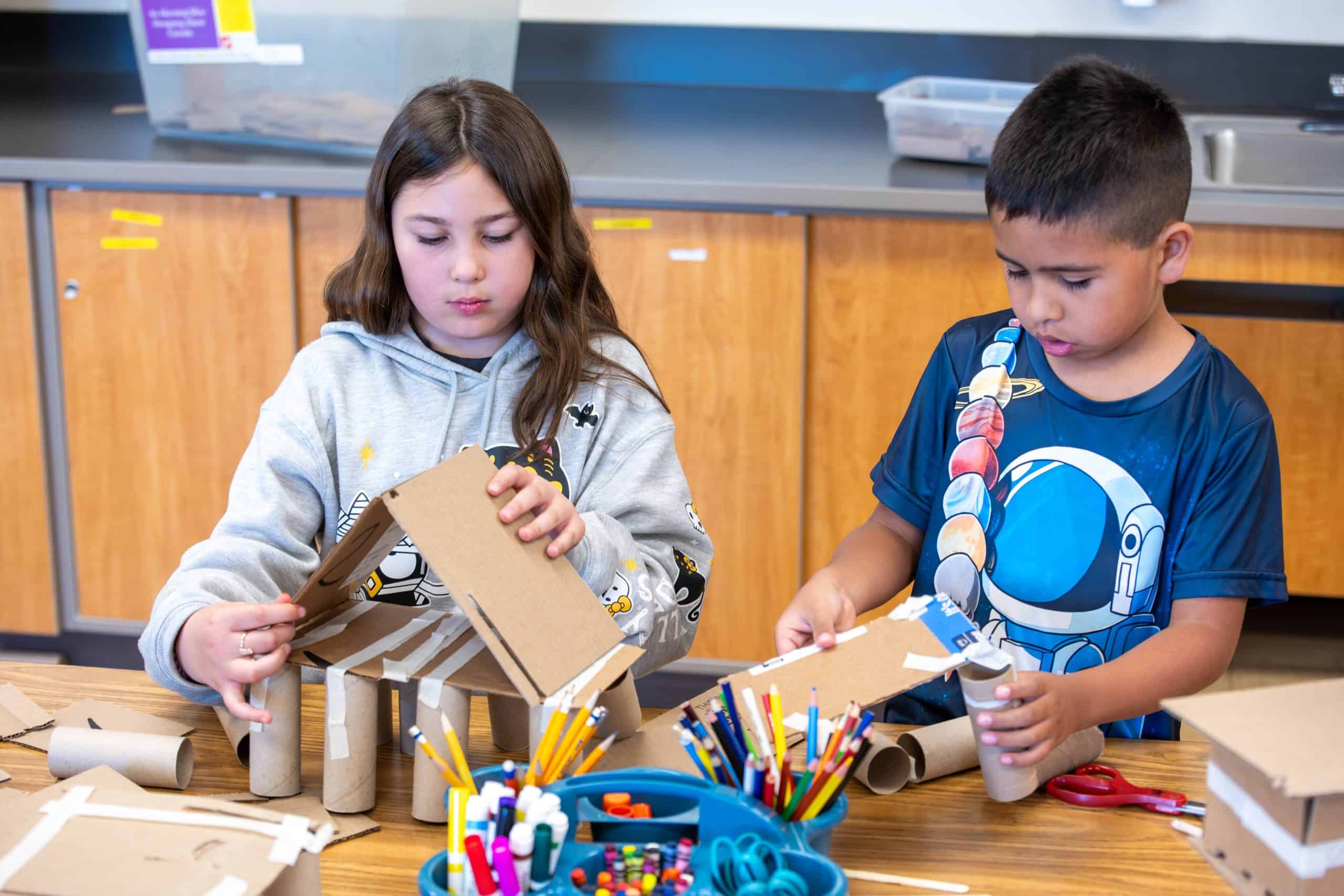Katie Denny, STEM Teacher at Thunder Valley K-8, combines literacy with STEM to create engaging, hands-on learning experiences. In Denny’s classroom, each design thinking challenge starts with a story. Students read a book that sets the stage for a STEM project, connecting the characters’ experience to hands-on problem-solving tasks. The goal is to create empathy, enhance vocabulary, and for students to use these skills to tackle real-world challenges through design and creativity.
“It’s been really helpful to connect with other STEM teachers across the district,” said Denny. “That’s where I got the idea to bring literacy into STEM. It’s exciting to see how the two subjects complement each other.”
Each grade level works on different book challenges. For example, kindergarteners read Little Bo Peep then designed fences to keep the sheep safe. First graders learned about growth mindset by drawing bats after reading Stellaluna. Second graders crafted and tested paper airplanes inspired by The Great Paper Caper. Third graders designed dream treehouses after reading I Want a New Room, while fourth graders built bridges out of popsicle sticks and straws after they read Secret Engineer: How Emily Roebling Built the Brooklyn Bridge.

For Denny, connecting stories with STEM is all about encouraging students to think critically and creatively. She aims for them to see how design impacts the world around them. “As students build their designs, they begin to understand why things work the way they do,” she explained.
Students progress through the design thinking process for each project, starting with empathy to understand the character and their challenges, then defining the problem, brainstorming solutions, creating prototypes, and testing their ideas. Along the way, they learn to collaborate, think critically, and solve problems. “They get so excited every time they walk in,” said Denny. “If I forgot to tell them which part of STEM we’re focusing on, they ask, ‘Which hat are we putting on today?’ Their excitement is incredible.”
The STEM projects connect with what students are learning in their other classes. Recently, fourth graders were studying the Wright Brothers. When she introduced a paper airplane challenge, they quickly linked the book What Do You Do With a Chance? To their classroom studies. “They couldn’t wait to share what they had learned,” she recalled. “It was amazing to see them so engaged.”
Denny’s hands-on approach is rooted in her own experiences. “Hands-on activities had such a big impact on me. Whether it was in school, on the basketball court, or working on the family farm, I see the same excitement in my students when they are working on their STEM projects,” she said. “We all learn differently, and I want my students to know it’s okay to make mistakes. Each time they do, they’re growing.”
Her advice to other educators is to embrace flexibility and creativity. STEM teachers have a unique opportunity to blend various disciplines, allowing students to thrive. When given the chance, students consistently rise to the challenge, showing remarkable creativity and enthusiasm.
Denny hopes her students will carry these lessons beyond the classroom. “I want them to explore, think outside the box, and embrace creativity in everything they do,” she said. “Most importantly, I want them to understand that learning is a journey – it’s not about getting it right every time, but about growing and enjoying the process.”



